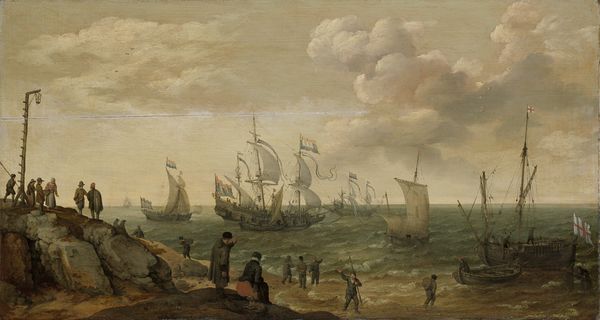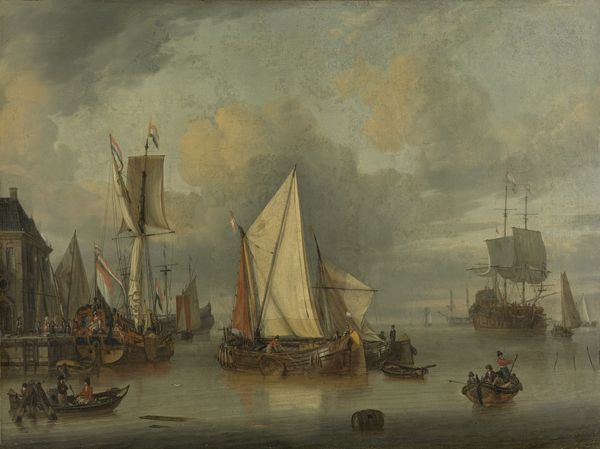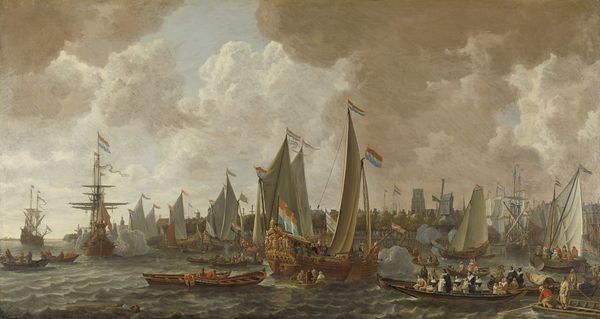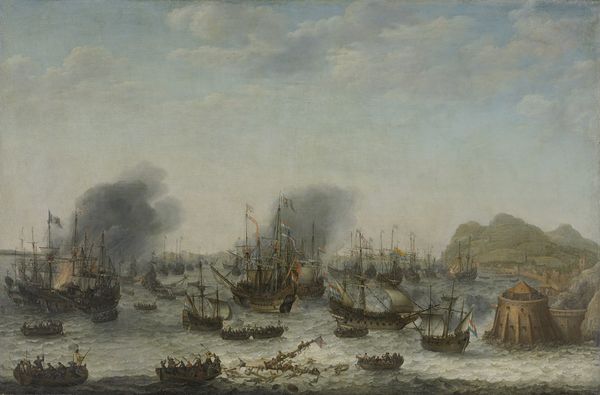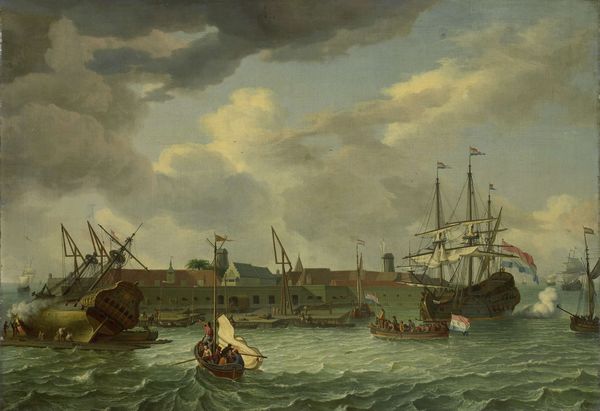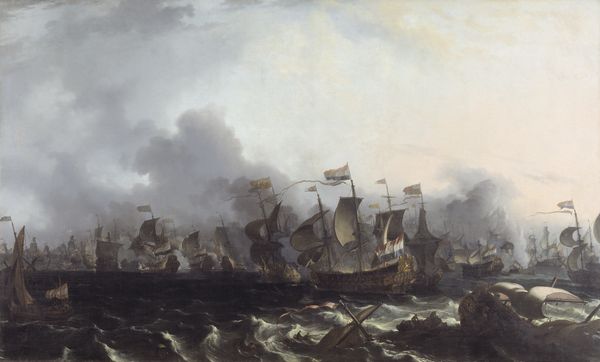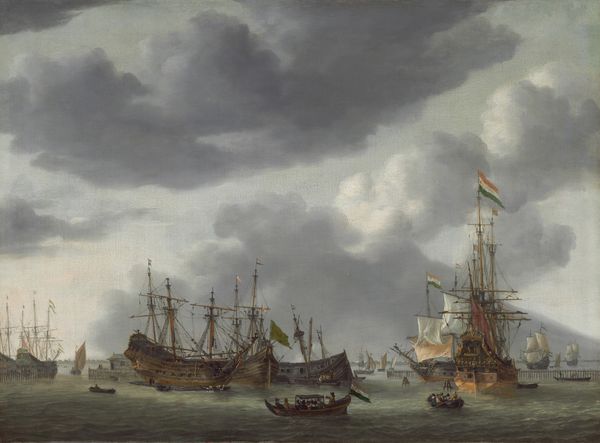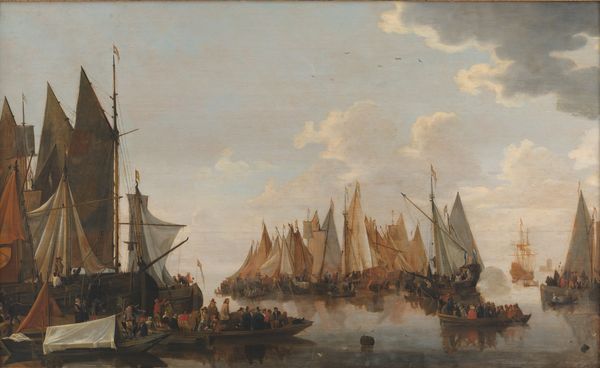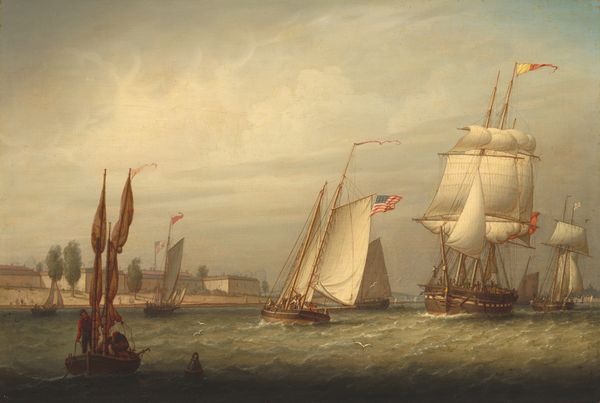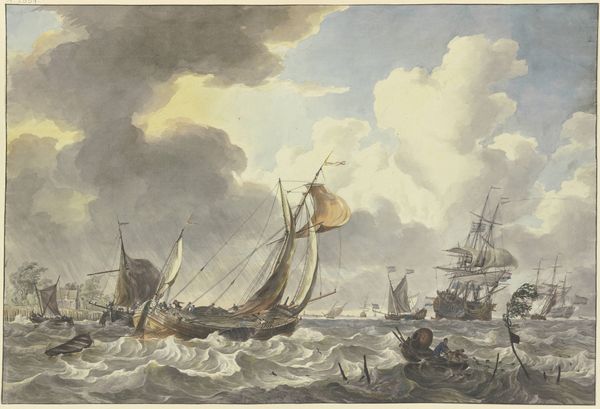
painting, oil-paint
#
dutch-golden-age
#
painting
#
oil-paint
#
landscape
#
cityscape
#
genre-painting
#
realism
Dimensions: height 86 cm, width 117.5 cm, depth 8.5 cm
Copyright: Rijks Museum: Open Domain
Curator: Abraham Storck, a master of the Dutch Golden Age, likely completed "The Roads of Enkhuizen" sometime between 1654 and 1708. The painting, rendered in oil on canvas, captures a bustling cityscape on the water. What strikes you upon viewing this piece? Editor: You know, I get a surprisingly serene vibe, considering the purported business. There's something so calming about that pale sky, reflected in the gentle movement of the water, with these sailboats drifting, not unlike the clouds above them. Curator: Indeed, Storck's employment of atmospheric perspective creates a tranquil distance despite the activity. Notice the precise detailing of the ships—each sail, each mast rendered with accuracy—contrasting the more subdued treatment of the water. Editor: Absolutely! Each vessel has a life of its own! It makes me think of little soaping boats, dancing along the canvas. Did they use them as fishing boats in those days or for more artistic ambitions like plein air painting, maybe even for piracy, who knows... the sails are what make you wanna leave everything behind and set off! Curator: The prevalence of marine paintings, or seascapes, during this period served not just aesthetic purposes, but acted as symbols of Dutch maritime power, prosperity, and far-reaching trade networks. Each vessel would represent these traits, making "The Roads of Enkhuizen," a genre painting steeped in the dominant political landscape of the time. Editor: Interesting, you can read power even between the painting’s brushstrokes! Still, to me, there's something more simple, like folk memories in here, it talks about that inner craving for horizons—an idea maybe that even pirates are but children of some lost paradise. I bet it’s all connected at some primal point. Curator: Well, it is difficult to separate symbolism and nostalgia given the test of time. I find the work valuable as an aesthetic snapshot, regardless of intent, due to the strong rendering of historical specifics—as is usually the case with realism. Editor: In the end, isn’t that what art’s supposed to do anyway: catch a moment and turn it into a place to return to, to think from? "The Roads of Enkhuizen" is no different; for an oil painting it manages to hold quite an essence of the here and now, and that, really, is what makes it eternal. Curator: An agreeable and eloquent sentiment to end on. Thank you.
Comments
No comments
Be the first to comment and join the conversation on the ultimate creative platform.
